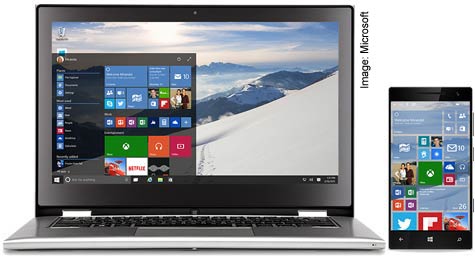Although there wasn’t any single piece of big news in what was a short week for many, I found a few interesting posts about technology that I want to share. Let’s take a look at my list for this week.
Proof in the Pudding
The assumption always has been that communities with broadband access have an advantage over those that don’t have access. The advantage is “official” now. Telecompetitor reports on work done by Broadband Communities Magazine concerning broadband and population size. The demarcation point for its research was 25 megabits per second (Mbps).
The magazine looked at all 3,144 counties in the United States. The findings essentially were that the states that had faster broadband, which consisted of more folks with access to the magic 25 Mbps or more, had more than 10 times the population growth as those under the line (.27 percent versus 2.8 percent). The top 10 percent of counties in terms of speed had a 3.2 percent increase, while those in the bottom 10 percent shrunk by .55 percent. That raised an interesting chicken and egg debate, according to Telecompetitor:
The obvious question, of course, is whether the low-ranking counties have low population growth because they lack good broadband or if, instead, they lack good broadband because they have low population growth. The researchers note that they have had conversations with county officials on this topic and that those conversations indicated that both dynamics are in play.
That Other IoT
A particularly interesting bit of analysis was about the promise of the Industrial Internet of Things (IIoT). The overall concept of the Internet of Things (IoT) is reaching the age at which it is being divided into subgroups, and chances are that the IIoT and IoT over time will be further subdivided.
The IoT is mostly mentioned as a platform by which consumers’ lives will be drastically changed. The Industrial Internet of Things (IIoT) is seen as a distinct entity, and a big one. ZDNet’s Colin Barker outlines its parameters and what may stand in its way:
The so-called Industrial Internet of Things (IIoT) could see the emergence of new services and business models based on intelligent connected devices and machines, according to consultants Accenture, and could boost growth in mature markets. However, these gains are at risk because companies and governments are not taking sufficient action to see wide adoption of digital technologies, it warns.
Barker says that investments in the IIoT and related initiatives will add $6.1 trillion to the U.S.’s gross domestic product (GDP). Other nations will make similar gains. The fly in the ointment, however, is that Accenture found that 73 percent of companies have not made concrete plans for the IIoT, the report said.
Not Done Yet
Verizon Communications reported what LightReading’s Alan Breznick labeled “surprising” growth numbers for its FiOS fiber network during the last quarter of 2014.
The company reversed a trend of ever-smaller gains by picking up 116,000 video and 145,000 broadband subscribers, which were greater than the 92,000 video and 126,000 broadband subscribers in the fourth quarter of 2013. The numbers, which were not expected because its 13-state fiber infrastructure build is more or less done, suggest that the telco is taking subscribers away from cable operators.
Microsoft Details Windows 10
Microsoft this week discussed significant advances in Windows 10. WirelessWeek reports that the new version of the company’s flagship operating system will include a new Web browser that is integrated with Cortana, its voice activation platform. Cortana itself will change as well:
Microsoft is expanding Cortana to serve as a search engine and personal assistant, capable of answering questions and responding to commands such as ‘Play music’ on desktop and laptop computers, as well as mobile devices.
Windows 10 will be available later this year as a free upgrade to Windows 7 or 8.1.
BlackBerry Wants a Federal Bailout
And, finally, comes the chutzpah blog of the year. Everyone is aware that the net neutrality debate will dominate the telecom and IT news next month. BlackBerry CEO John Chen understands this as well, and wrote a post based on a letter he sent to government officials suggesting that net neutrality is not enough.
His idea is that ensuring that the folks who control the networks don’t discriminate is meaningless if applications and content are not neutral as well. The problem, as he sees it, is that many companies only make apps and content available to iOS and Android users. The answer is simple:
Therefore, neutrality must be mandated at the application and content layer if we truly want a free, open and non-discriminatory internet. All wireless broadband customers must have the ability to access any lawful applications and content they choose, and applications/content providers must be prohibited from discriminating based on the customer’s mobile operating system.
Chen’s answer is government standards for app creation. His thought, apparently, is that if BlackBerry happens to benefit from new laws mandating that every carrier support its products, well, it’s just a happy accident.
Carl Weinschenk covers telecom for IT Business Edge. He writes about wireless technology, disaster recovery/business continuity, cellular services, the Internet of Things, machine-to-machine communications and other emerging technologies and platforms. He also covers net neutrality and related regulatory issues. Weinschenk has written about the phone companies, cable operators and related companies for decades and is senior editor of Broadband Technology Report. He can be reached at [email protected] and via twitter at @DailyMusicBrk.




